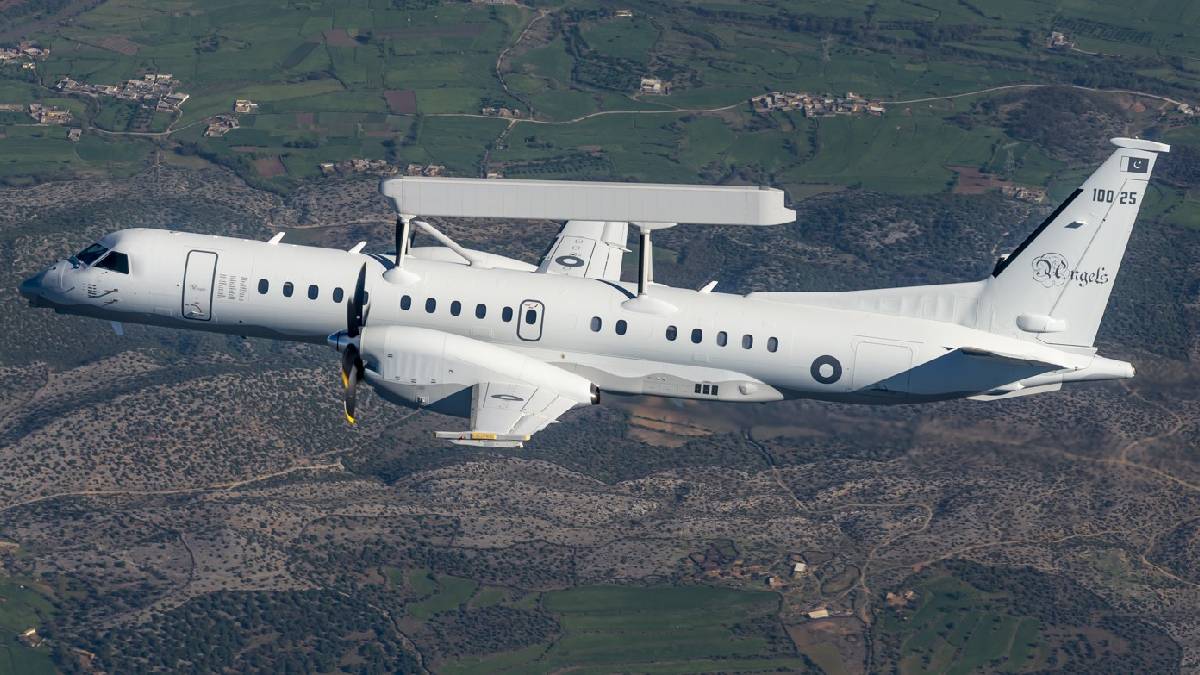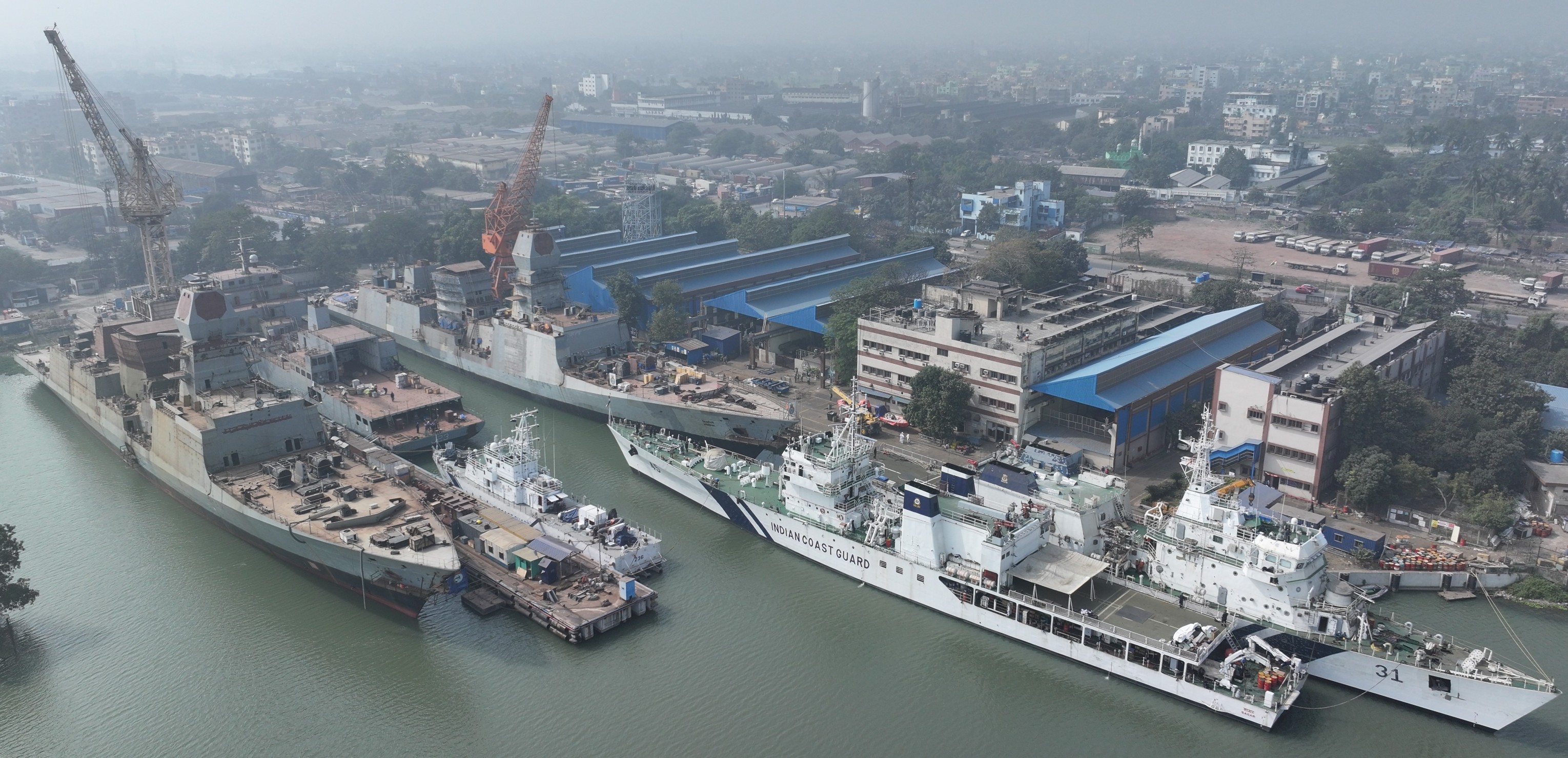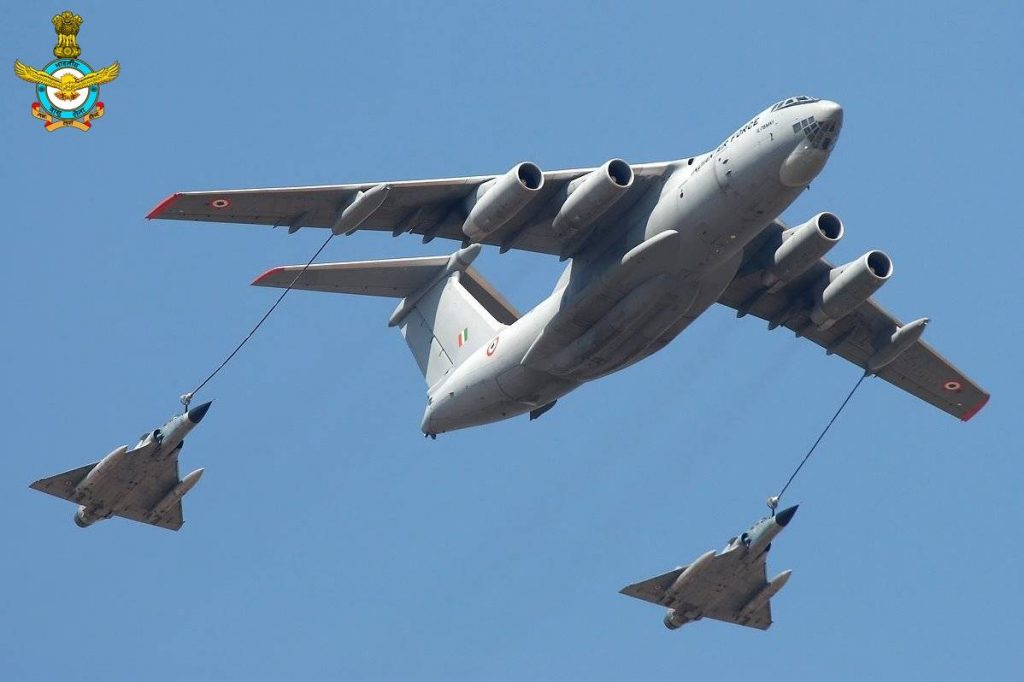SOURCE: AFI


In a historic milestone for modern warfare, India’s S-400 air defense system, dubbed “Sudarshan Chakra,” has etched its name in the annals of military history by achieving the longest-range surface-to-air missile (SAM) kill ever recorded. On the night of May 9–10, 2025, during a tense escalation between India and Pakistan, the Indian Air Force (IAF) successfully neutralized a Pakistan Air Force (PAF) Saab 2000 Erieye Airborne Early Warning and Control (AEW&C) aircraft at an unprecedented distance of 314 kilometers. This remarkable feat not only underscores the technological prowess of India’s air defense capabilities but also marks a significant moment in the ongoing India-Pakistan conflict, with both nations entering the record books for this extraordinary event.
The record-breaking engagement occurred amid heightened hostilities following India’s Operation Sindoor, launched in response to the April 22, 2025, terror attack in Pahalgam, Jammu and Kashmir, which claimed 26 civilian lives. India’s retaliatory strikes targeted terrorist camps in Pakistan and Pakistan-occupied Kashmir (PoK), using precision munitions like the BrahMos cruise missile and SCALP missiles deployed by Rafale aircraft. Pakistan responded with a large-scale aerial assault, deploying drones, missiles, and fighter jets targeting 15 Indian military installations across northern and western India, including key bases in Srinagar, Pathankot, Amritsar, and Bhuj.
Continue readingSOURCE: AFI


Amid renewed tensions and reports of recent aerial engagements between India and Pakistan, prominent Pakistani defence analysts have made a revealing admission: Pakistan lacks the capability to intercept India’s air-to-surface missiles, particularly the air-launched variant of the BrahMos supersonic cruise missile.
Speaking on Pakistani news platforms, defence experts Ikramullah Bhatti and Adil Sultan acknowledged that there is currently no effective air defence system in Pakistan that can stop a missile like the BrahMos-A, which was reportedly used by the Indian Air Force (IAF) during recent strikes on Pakistani airbases.
Continue readingSOURCE: AFI


In a striking revelation that has sent ripples through South Asian defense circles, Indian media reports claim that during the recent #OperationSindoor, the Indian Air Force (IAF) successfully targeted a hardened aircraft shelter at the Jacobabad Airbase in Pakistan. The strike allegedly resulted in the destruction of at least two to four F-16 Block-52 fighter jets belonging to the Pakistan Air Force (PAF).
According to these reports, the F-16s were housed inside the hangar for maintenance and repairs when precision-guided munitions fired by the IAF struck the facility. While the Pakistan Air Force has maintained official silence on the matter, satellite imagery and post-strike assessments cited by Indian sources indicate significant structural damage to the hangar and surrounding infrastructure.
Continue readingSOURCE: AFI


In a significant boost to India’s air defense capabilities, Bengaluru-based Alpha Design Technologies Limited (ADTL) has successfully delivered the first of six Surya Very High Frequency (VHF) radars to the Indian Air Force (IAF). This milestone, announced on May 24, 2025, marks a pivotal step in India’s pursuit of self-reliance in defense technology, with the indigenous radar system designed to detect stealth aircraft and enhance the IAF’s situational awareness. The delivery, part of a ?200 crore contract for six solid-state 3D radars, underscores Bengaluru’s growing prominence as a hub for cutting-edge defense manufacturing.
The Surya VHF radar, developed entirely in India by ADTL, is a state-of-the-art mobile radar system designed to counter stealth aircraft and other low-observable aerial threats. Operating in the VHF band, the radar leverages longer wavelengths to detect stealth targets, which are often invisible to conventional high-frequency radars due to their radar-absorbing coatings. With a range of 360 kilometers for a 2 m² target, the Surya radar boasts advanced surveillance capabilities, including a staring mode that enhances its ability to track stealthy objects at long distances. The system, mounted on two 6×6 vehicles for mobility, can perform 10 rotations per minute, ensuring rapid and comprehensive coverage.
Continue readingSOURCE: AFI


As reports intensify regarding Pakistan’s potential acquisition of the Chinese J-35A stealth fighter jet, India is recalibrating its approach to countering fifth-generation aerial threats. Instead of pursuing the expensive and strategically complex procurement of platforms like the Russian Su-57E or the American F-35A, India is opting for a more pragmatic and cost-effective route—enhancing its anti-stealth detection capabilities.
At the forefront of this strategy is the indigenously developed Anti-Stealth VHF Radar by the Defence Research and Development Organisation (DRDO), manufactured by Bharat Electronics Limited (BEL), Ghaziabad. Deployed on a TATA 6×6 LPTA 1828 High Mobility Vehicle (HMV) platform, the radar is designed to neutralize one of the most critical advantages of fifth-generation fighters—low observability or stealth.
Continue readingSOURCE: IDRW.ORG


The recent India-Pakistan skirmish, dubbed Operation Sindoor, marked a pivotal moment for India’s defence industry, providing a real-world proving ground for an array of indigenously developed weapons from the private sector. Conducted in May 2025, this operation saw the Indian Armed Forces deploy and test advanced platforms, including Tata Advanced Systems Limited’s (TASL) ALS-50 Loitering Munition, NewSpace Research and Technologies’ Swarm Drones, Mahindra’s Armado Armoured Vehicle, Johnnette Technologies’ JM-1 Loitering Munition, and the VajraShot Anti-Drone Gun.
The successful battlefield use of these systems against Pakistani forces, particularly in countering drone swarms and precision strikes, has earned them the coveted “combat-tested” label, significantly enhancing their appeal in the global defence market. This milestone not only validates India’s push for self-reliance under the “Aatmanirbhar Bharat” initiative but also positions these platforms as viable export options for countries previously hesitant due to their untested status.
Continue readingSOURCE: IDRW.ORG


Hyderabad-based Raghu Vamsi Machine Tools (RVMT), a leading aerospace and defense manufacturing firm, has announced plans to develop a cutting-edge kamikaze drone, marking a significant step in India’s push for self-reliance in unmanned aerial systems (UAS).
The new drone, showcased at a recent industry event, will leverage a hybrid propulsion system combining jet-engine and electric propulsion technologies. Central to this project is the “INDRA RV25:240N,” a fully indigenous micro turbojet engine developed by RVMT, which the company claims offers best-in-class thrust-to-weight ratios. With a projected range of 500 kilometers, the drone aims to bolster India’s defense capabilities amid rising regional tensions, particularly following recent conflicts involving drone warfare.
Continue readingSOURCE: AFI


In a significant escalation of tensions between India and Pakistan, a report by the Hindustan Times claims that the Indian Air Force (IAF) has evidence confirming the destruction of a Pakistan Air Force (PAF) Saab 2000 Erieye Airborne Early Warning and Control (AEW&C) aircraft. According to the report, the aircraft was struck by an Indian S-400 air defense system at a distance of over 350 kilometers inside Pakistani airspace. This incident, if verified, marks a major blow to the PAF’s aerial surveillance capabilities, as the report further suggests that this was not the only Erieye loss for Pakistan, with another aircraft reportedly destroyed on the ground.
The Hindustan Times report indicates that the IAF leveraged its advanced Russian-made S-400 Triumf air defense system to target the PAF’s Saab 2000 Erieye, a critical asset for airborne surveillance and command-and-control operations. The S-400, known for its long-range engagement capabilities, reportedly struck the aircraft at an unprecedented distance of over 350 kilometers, showcasing the system’s reach and precision. The Erieye, equipped with an active electronically scanned array (AESA) radar, is a high-value platform for the PAF, enabling early detection of threats and coordination of air operations.
Continue readingSOURCE: AFI


In a bold move to bolster Andhra Pradesh’s role in India’s defense manufacturing ecosystem, Chief Minister and key National Democratic Alliance (NDA) ally N. Chandrababu Naidu has proposed relocating the production of Hindustan Aeronautics Limited’s (HAL) Advanced Medium Combat Aircraft (AMCA) from Congress-ruled Karnataka to his state. Naidu has offered 10,000 acres of land in the Lepakshi-Madakasira hub, strategically located just an hour’s drive from Bengaluru’s Kempegowda International Airport, to establish a state-of-the-art manufacturing facility for India’s indigenous fifth-generation stealth fighter jet.
The AMCA, India’s ambitious project to develop a twin-engine, stealth-capable multirole fighter, is a cornerstone of the nation’s push for self-reliance in defense under the Atmanirbhar Bharat initiative. Currently, HAL’s operations, including research and development for the AMCA, are concentrated in Bengaluru, Karnataka, where HAL is headquartered. However, Naidu’s pitch to shift the production facility to Andhra Pradesh underscores his vision to transform the state into a hub for advanced aerospace and defense manufacturing.
Continue readingSOURCE: AFI


The Defence Research and Development Organisation (DRDO) is set to commence trials of the Pinaka MkIII, an advanced 120-kilometer-range guided rocket system, marking a significant leap in India’s indigenous artillery capabilities. Developed by DRDO’s Armament Research and Development Establishment (ARDE) in collaboration with other key laboratories, the Pinaka MkIII is designed to deliver precision strikes with enhanced range and lethality.
Limited supplies of the pre-production units have already been manufactured by Solar Industries India Ltd., a key private-sector partner, and the system is now ready for developmental-cum-user trials, reflecting its production-ready specifications. These trials, expected to begin soon, aim to fast-track the system’s induction into the Indian Army, reinforcing India’s strategic deterrence in the region.
Continue readingSOURCE: AFI


Garden Reach Shipbuilders & Engineers (GRSE), one of India’s premier defense shipyards, has announced plans to increase its shipbuilding capacity from 24 to 28 vessels by the end of 2025. This strategic expansion, driven by a robust order book and growing demand for both naval and commercial vessels, underscores GRSE’s pivotal role in advancing India’s maritime capabilities and supporting the Atmanirbhar Bharat initiative. The Kolkata-based shipyard is also exploring a greenfield facility to further enhance its production capabilities in the coming years.
GRSE’s current shipbuilding capacity stands at 24 vessels, supported by its advanced facilities in Kolkata, which include a dry dock, building berths, slipways, and a non-tidal wet basin for fitting out medium and small ships. The shipyard has been a cornerstone of India’s defense sector, having delivered over 100 warships, including frigates, corvettes, and patrol vessels, with an indigenous content exceeding 90%. To accommodate an expanding order book and capitalize on emerging opportunities in both domestic and international markets, GRSE aims to boost its annual production capacity to 28 vessels by the end of 2025.
Continue readingSOURCE: AFI


Pakistan’s air defense strategy is undergoing a significant shift as the country explores the acquisition of Turkey’s advanced S?PER 1 and S?PER 2 long-range air and missile defense systems. This pivot comes in the wake of the underwhelming performance of Chinese-supplied HQ-16 and HQ-9 systems during recent conflicts with India, where they failed to detect or intercept Indian strikes and were crippled by Indian electronic warfare (EW) tactics. The move signals Pakistan’s growing frustration with its current air defense architecture and a strategic effort to diversify its defense partnerships amid evolving regional threats.
During Operation Sindoor, launched by India on May 7, 2025, in response to a terror attack in Pahalgam that killed 26 civilians, Indian forces conducted precision strikes on terrorist sites and key Pakistani airbases, including Noor Khan and Rahimyar Khan. Indian Air Force (IAF) Rafale jets, armed with French-origin SCALP cruise missiles, bypassed Pakistan’s HQ-16 and HQ-9 systems, which failed to intercept a single missile. Reports indicate that Indian EW capabilities, including radar jamming and signal suppression, effectively blinded Pakistan’s air defense network, leaving critical installations vulnerable. The strikes not only destroyed terrorist infrastructure but also damaged HQ-9 launchers in Lahore and Sialkot, exposing the limitations of Chinese technology in a real combat scenario.
Continue readingSOURCE: RAUNAK KUNDE / NEWS BEAT / IDRW.ORG


In a significant boost to India’s indigenous fighter jet program, GE Aerospace has assured Hindustan Aeronautics Limited (HAL) that it will increase production of the F404-IN20 engine from the current 12 units per year to 24 units per year starting in 2027. This commitment comes after a 14-month delay in engine deliveries, which had disrupted HAL’s production timeline for the Tejas Light Combat Aircraft (LCA) Mk1A. Sources close to idrw.org confirm that GE has already delivered one F404 engine and is now working to meet HAL’s requirements, addressing earlier setbacks caused by the closure of its production line.
The F404-IN20, a high-thrust variant of GE’s renowned F404 engine family, is specifically tailored for the single-engine Tejas Mk1A, delivering a thrust of 84 kN. It features advanced components like a higher-flow fan and single-crystal turbine blades, making it the most powerful engine in the F404 series and a critical component for the Indian Air Force (IAF), which is grappling with a shortage of fighter squadrons. The IAF has ordered 83 LCA Mk1A jets under a ?48,000-crore deal signed in February 2021, with an additional 97 jets under consideration, bringing the total potential order to 180 aircraft. HAL aims to produce 24 jets annually to meet this demand, a target that hinges on a steady supply of engines from GE.
Continue readingSOURCE: RAUNAK KUNDE / NEWS BEAT / IDRW.ORG


Hindustan Aeronautics Limited (HAL) has unveiled plans to initiate a comprehensive upgrade and overhaul program for the Indian Air Force’s (IAF) Tejas Mk1 fleet starting in 2026. The initiative will focus on enhancing the operational capabilities of the older Initial Operational Clearance (IOC) and Final Operational Clearance (FOC) variants of the Tejas Mk1, aligning them with the advanced standards of the Tejas Mk1A in a phased manner.
The Tejas Mk1, a cornerstone of India’s fighter jet fleet, has been operational with the IAF since its induction in 2016. The IOC and FOC variants, while capable, lack some of the advanced features of the Tejas Mk1A, which includes upgraded avionics, an Active Electronically Scanned Array (AESA) radar, improved electronic warfare systems, and integration of advanced weaponry like the Beyond Visual Range (BVR) Astra missile. To bridge this capability gap, HAL’s upgrade plan will prioritize avionics enhancements over structural modifications, such as changes to the air intake, which would require extensive redesign and testing.
Continue readingSOURCE: RAUNAK KUNDE / NEWS BEAT / IDRW.ORG


In a significant step toward enhancing the Indian Air Force’s (IAF) operational capabilities and self-reliance in defense technology, Hindustan Aeronautics Limited (HAL) has been tasked with integrating indigenously developed Software-Defined Radios (SDRs) onto the IAF’s fleet of Ilyushin IL-78 mid-air refueling tankers.
The IAF operates six IL-78MKI tankers, acquired from Russia between 2003 and 2004, which serve as critical force multipliers for extending the range and endurance of its fighter jets, including the Su-30 MKI, Rafale, and Mirage 2000. Capable of transferring up to 110 tons of fuel via three hose-and-drogue refueling pods, the IL-78s enable long-range missions, such as deep-strike operations and sustained air patrols, essential for countering threats along India’s borders with Pakistan and China. However, the tankers’ legacy communication systems, reliant on outdated analog and early digital radios, have limited interoperability and vulnerability to electronic warfare, necessitating a modern upgrade.
Continue reading